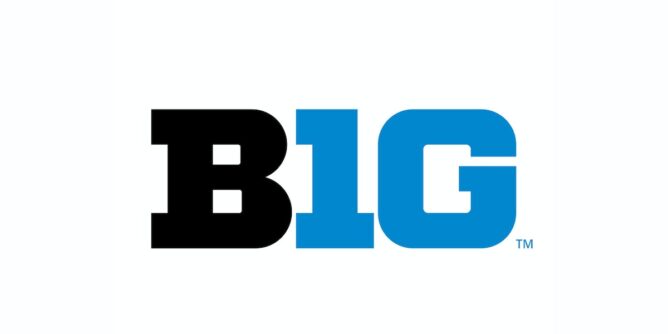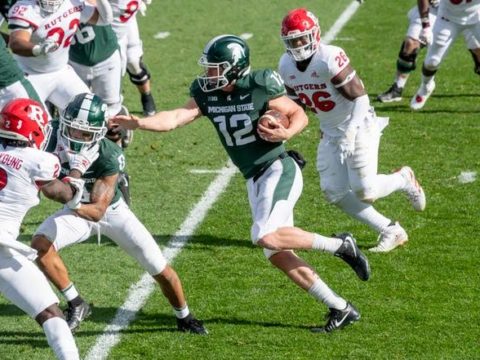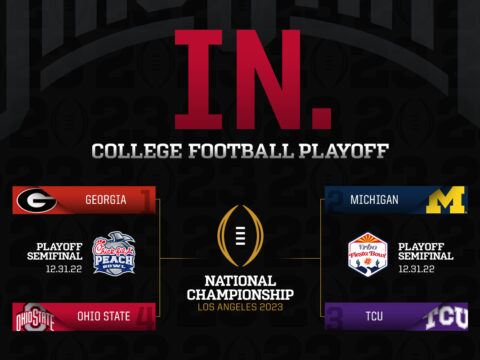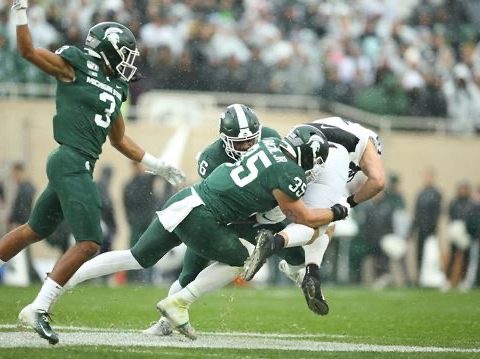
The Big Ten just announced a 7-year, $7 Billion (perhaps as much as $8 Billion) TV package that will compensate the Big Ten Conference more than $1 Billion per year commencing in 2023.
The financial implications are extraordinary.
From an historical perspective, HL Hunt, the late, legendary oilman and one of the wealthiest men in the world until his death in 1974, once said in an exasperated tone about his son Lamar Hunt losing millions during the formation of the Dallas Texans (later to become the Kansas City Chiefs) in the early 60’s: “…a million here, and a million there, and pretty soon you’re talking real money”.
Well, in this case the TV deal executed by the Big Ten is “real money” expressed in BILLIONS. There is no other way to describe it: the Big Ten TV package is astronomical and it would be fair to say the late HL Hunt would approve!
Given that the Big Ten Conference will earn more than $1 Billion per year via TV rights, it’s worth noting the revenue differential compared to three notable Power 5 Conferences:
- $700 Million more per year than the SEC.
- $750 Million more per year than the PAC 12.
- $800 Million more per year than the Big 12…but who’s keeping track, right?
I don’t need to articulate the obvious, but the Big Ten TV contract is the most lucrative in the history of college sports and its highly unlikely any of the aforementioned conferences can keep pace, certainly not in the near term because it’s worth noting SEC current contract doesn’t expire until 2034.
Of course, the Big Ten Conference is a pioneer at executing mega TV deals and everyone remembers the controversial formation of BTN when everyone thought the sky was falling? Well, the sky didn’t fall.
Shortly after BTN became operational, each Big Ten school was allocated an astronomical figure at the time of approximately $25 Million per year.
Then, as revenues increased, BTN increased its allocation per team to about $50 million per year…and fast forward to this year and Big Ten schools will receive approximately $60 Million each.
Yet, as we look forward pursuant to the newest TV package, each Big Ten school could receive as much as $100 million each year commencing in 2025 (exact allocation TBD) and continuing until 2030. So, over the next 7 years, each Big Ten school could receive an allocation approaching $700,000.
To put that into perspective, Michigan State had a total sports budget in 2019/2020 of approximately $140 million (which ranked #18 nationally & #6 Big Ten) so the newest Big Ten TV package will enable Michigan State and most Big Ten schools to cover the majority of their athletic expenses via TV revenues.
Call it “equity sharing, or revenue sharing…or simply beating the competition”:
The newest TV package will enable Big Ten schools, already some of the most heavily endowed universities in the world, schools which boast some of the finest sports complexes anywhere on the planet, to live even larger.
The TV package also means the Big Ten will control the largest TV networks, (namely BTN, CBS, Fox and NBC) within the largest TV markets in the land, including but not limited to New York/New Jersey, Philadelphia & Washington DC …Chicago, Cleveland, Columbus and Detroit…as well as LA & San Diego… and that means the Big Ten will dominate the TV airwaves each Saturday.
I hearken back to the days when there were just 4 regional games on TV each week in the early 60’s (a single televised game in each time zone) complemented by 1 national game…and if you were lucky, the Spartans would be on TV twice during the season.
Now, every single Big Ten game (more than 160 during the regular season) will be televised and available throughout the Big Ten TV network.
Expansion fueled the fire, and the Big Ten will pick apart the PAC 12
Make no mistake, the addition of UCLA and USC fueled the fire of expansion and that had enormous appeal to media folks and sponsors.
As I commented (and speculated) in my July 12 article (please scroll down to click the link), this is the Big Ten taking next steps as a Super Conference, and in turn, the PAC 12 is in the throes of being picked apart. The Big Ten is looking at PAC 12 schools like a king predator stalking prey on the Serengeti.
First comes UCLA and USC to the Big Ten and they will anchor the west coast. Of course, UCLA plays in the historic Rose Bowl, while USC plays in the equally historic LA Coliseum.
And now that the mega TV package has been consummated, I predict (and we can expect) the Big Ten will continue to pick apart the PAC 12 and usurp Oregon, Washington, Utah, Colorado, Stanford, and Cal.
What would the Big Ten get by adding those 6 schools?
The Big Ten would get some of the wealthiest, most heavily endowed universities in the land, schools built upon stellar academic credentials, not to mention, incredible athletic histories in Football, Basketball, Baseball and Track & Field.
Schools with enormous alumni bases, and schools that generate an immense amount of national interest.
In terms of geography and market size, Oregon and Washington would bring with them the entire northwest in the likeness of Eugene, Oregon (home of Nike) as well as Seattle (home of Amazon, Boeing and more).
Of course, Utah and Colorado would bring with them the Rocky Mountain market in the likeness of Salt Lake City and Denver, and of course, Stanford and Cal would bring San Francisco and the entire Bay area.
Given the current state of economic events, it would be an easy assumption to think those schools would be overwhelmingly enticed to join the Big Ten from a financial as well as a survival perspective.
After all, if you are Kevin Warren or a member of his team sitting at the negotiating table representing the interest of the Big Ten and counting the cards in your hand, then you implicitly like your position.
In fact, one of the questions Big Ten strategist would ask is, “…without being arrogant, where else would those schools go”?
After all, the PAC 12 is about to fold due to the defection of UCLA and USC because it no longer has broad base appeal, and in its current configuration the PAC 12 does not appeal to networks and sponsors without a Southern California base.
At the bottom line (all Big Ten, all the time):
I’m not a Big Ten insider, but business logic tells me the Big Ten will “cherry pick” the best of the remaining PAC 12 schools.
It’s not if…it’s when!
With the addition of UCLA and USC, of course I am predicting the Big Ten will also usurp Oregon, Washington, Utah, Colorado, Stanford and Cal as well, it means Big Ten TV coverage would commence at 12 noon EST (or 9:00 AM PST) and continue throughout day until the last Big Ten game is played on the West Coast, commencing at approx. 7:00 PM (PST) and concluding about 10:00 PM (PST)…or about 1:00 AM EST on the east coast…all Big Ten, all the time
Of course, I am not a soothsayer and I am not able to predict the future, but business logic tells me the elite PAC 12 schools are about to become members of the Big Ten due to media appeal and financial implications and that means survival.
As a Super Conference, the Big Ten is taking the next step in terms of TV rights and expansion, and the most desirable PAC 12 schools will be eager to jump on board.
Thank you for reading and I always welcome your comments and opinion.






